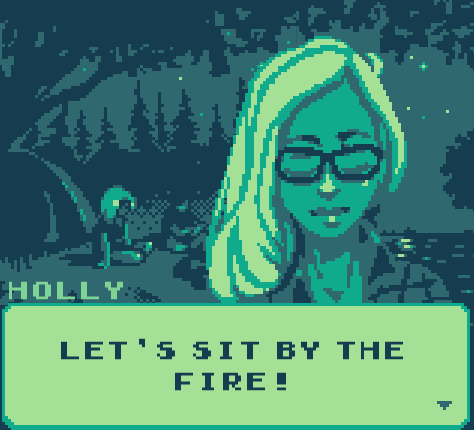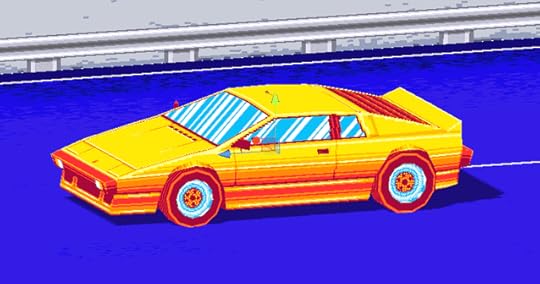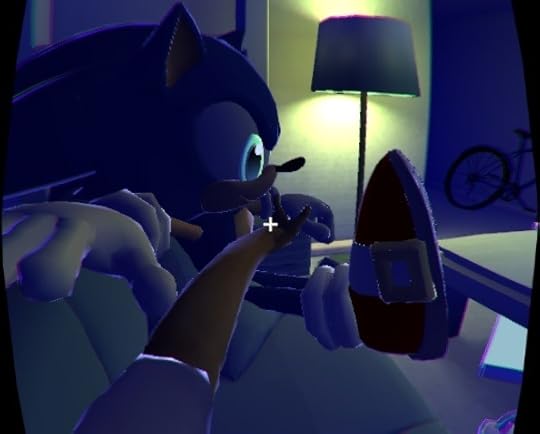Kill Screen Magazine's Blog, page 239
August 20, 2015
One More Night will have you reliving your teenaged summer regrets
The annual “song of the summer” competition is bullshit. Like summer movie season, which has taken over much of the calendar year over the course of Marvel’s latest phase, the song of the summer is a temporally inaccurate designation. But even if the song of the summer only made its presence felt during three months of the year, it would still be a bad idea. When you’re young, summer is its own world, encompassing a variety of distinct moods. There’s the exhilarating sense of freedom of early summer days, which give way to the boring doldrums of mid-summer, and finally the creeping fear that you should have done more while you had the chance. All of these feelings deserve their own songs, which is why songs of the summer always fall short. This pop music trope doesn’t allow for sufficient specificity.

One More Night is a lyrical ode to a particular summer experience: the period of quiet—and sometimes melancholic—reflection on the season that is about to come to an end. Created for the fourth Game Boy Jam, it follows three friends as they go on their annual beach retreat before returning to school. Seeing as this is their last year before graduating, the occasion comes with an added sense of urgency. Instead of reflecting on the preceding months and the school year to come, the threesome find themselves reflecting on all the summer’s they’ve had and an end of an era. The fear that they will never get a chance to make up for this summer’s shortcomings gives their story an added layer of poignancy.
There are few choices to be made in One More Night, which makes sense insofar as the game is about making peace with the choices characters did and did not make over the summer. Much of the gameplay comes down to reading conversations between the characters. Nothing shocking is revealed because all of these conversations refer to things that were said in the years before One More Night starts. There are a couple choices—do you want to talk about boys? drink wine? (yes and yes, duh)—but they don’t meaningfully change the course of the game. This is a game about nothing, but not in the Seinfeldian sense of the term—quite the opposite in fact. The characters in One More Night are using this relative nothingness to reflect on their life choices.
Nothingness is a chance to reflect on life choices.
In its own way, One More Night is what one might want from a song of—and about—the summer. It is scored by mellow synths that are reminiscent of early-career Styrofoam. At times, the text representing laughter merges with bleeps and bloops that float somewhere between being sound effects and background music. This, along with the blue-green color scheme, gives One More Night the sort of coherence that summer anthems normally lack. You will never get this sort of emotional experience on top-40 radio, but the world would be a marginally better place if you could.
Videogames are afraid of the female body
Examining the complicated relationship between videogames and female nakedness.
August 19, 2015
Silent Hill becomes a beat 'em up in this Streets of Rage mash-up
Fan games come in all shapes and sizes. There are high-def remakes like the recently cancelled Resident Evil 2 Reborn, and spiritual successors like Allison Road, which deviates in some ways from its initial inspiration P.T. while still retaining some of its influential qualities.
Then you have things like Streets of Rage: Silent Hill.

Silent Hill has never been known for its combat, which is often clunky and unpleasant, but Streets of Rage: Silent Hill changes that up by using the foggy town as a backdrop for its OpenBoR-powered beat ‘em up.
This isn’t a cheap, gimmicky reskin
In this cross-genre reimagining, you get to take on the town as series protagonists James Sunderland, Heather Mason, and Travis Grady, but also side characters like Angela, Maria, and Eddie, and enemies like Scarlet and the iconic Pyramid Head. Each character is modeled after a fighter from Streets of Rage, moveset and all.
This isn’t a cheap, gimmicky reskin, either. Opponents will be recognizable to Silent Hill fans as they’re pulled from almost every game in the series. Similarly, levels include the foggy streets of the town, memorable locales like Rosewater Park, the iconic rusty corridors of the Otherworld, plus the usual apartment, prison, and hospital settings thrown in between a few familiar boss fights.

While Konami turns to abrasive pachinko machine versions of its survival horror staple in the wake of Silent Hills’ cancellation, we can probably expect to see more fan games of the series pop up as time goes on. I'm honestly surprised there isn't more already, given how dedicated fans of this series are.
A few already exist. Allison Road, inspired by the still actively played Silent Hills demo P.T., is about to launch a Kickstarter soon, but there are also small standalone experiences like Alchemilla and PuniTy. I'm still wondering when someone is going to attempt a ground-up remake similar to what Black Mesa is for the first Half-Life—though Konami would probably shut it down pretty quick.
You can download Streets of Rage: Silent Hill from Streets of Rage Online.
Throwback car game Drift Stage is elegantly sliding its way towards completion
Drift Stage is quite obviously a game about cars, but it is also a story about the passage of time. You can trace the evolution of car—and car game—culture in its influences: from 1960s Hot Wheels fantasies, to iconic cars of the 1980s, to 1990s arcade racers like Initial D, to the 21st century funding mechanism that is Kickstarter. To watch preview footage of Drift Stage, then, is to think about how our relationship with automotive entertainment has evolved. One part of that evolution, of course, is that Kickstarter delivery dates are purely notional. So it is with Drift Stage, which was initially slated to come out in the spring but is now promising a release in late 2015. In the meanwhile, expectant fans and backers will have to make do with Super Systems Softworks’ latest batch of screenshots and preview gifs.
Super Systems Softworks claims the delay has given them time to improve the handling of the cars in their game. I’m no car mechanic (or expert in videogame mechanics, for that matter), but the results look pretty damn neat:
As you can see, cars glide along neon highways that come to resemble magic carpets. This effect makes sense insofar as Drift Stage is not really interested in the automobile as a form of conveyance. Drifting is not about efficiency and neither is this game, which prioritizes aesthetic concerns over more pragmatic impulses.

This relationship between artistic expressionism and gameworld physics is at the heart of the latest Drift Stage update. On the one hand, the post is full of details about the game’s physics and finer points. The game, however, is not being made to satisfy car wonks. ““We’re trying to make a throwback to arcade racers that were just about fun cars going fast—not having to build a cockpit in your living room, having this obsessive level of simulation that a lot of games strive for these days,” developer Chase Petit recently told Autoweek. It takes a lot of work to create an abstract car game—more work than Drift Stage’s developers initially anticipated—but much of that work is necessary to ensure that the nuts and bolts won’t always be visible. Slide into the orange night and forget about physics.
This InnerSpace trailer is here to make sure you find tranquility today
Hey man, how's your Wednesday going? Feeling good? Happy? At one with your inner soul and outer essence? Good, good. That's good. Or, you know, maybe you're not. Maybe you feel your center's a bit shaky, and wish the ground seemed more stable—or at least more navigable. That's totally chill too—absolutely no shame in that. They can't all be good days, right. No matter how you're feeling or where you are in life, we're all just flying vessels trying to make it in this vast world of fragmented, drifting objects that are both repelled and attracted to one another.
do some pretty sweet tricks in a flying submarine
There's a peace that comes over you as you watch the counterintuitive logic of the world of flight exploration game Innerspace. The basic concept behind the game is an inverted physics system, a result of an essentially reversed earth. The world of Innerspace includes a core made out of air and air made of water. Gravity pulls outward, which allows you to do some pretty sweet tricks in a flying submarine. You are a cartographer, exploring different spherical islands with unique elemental phenomenons, collecting relics along the way in order to understand the many different cultures inhabiting each world.
The trailer (released alongside a video interview about the narrative experience of Innerspace) follows your journey through these divergent spheres. The music slowly swells with every twist and turn your vessel takes, scoring the rhythm of discovery. You dive and glide into each area seamlessly, and whether it's water-based or ice-based place, no task is too great or any weather pattern too overpowering to match the swiftness of your craft. You soar along the surface, diving deeper into these uncharted bubbles by collecting relics that unlock their secrets. Document your physical discovery on a map, while making sense of the historical context through your own inward journey. Innerspace presents the whole package: with outward beauty inspiring quiet, inward reflection.
Innerspace is only scheduled for release sometime in late 2016. You can follow its Kickstarter for more updates.
This is a command: you have to play Sonic Dreams Collection
Sign up to receive each week's Playlist e-mail here!
Also check out our full, interactive Playlist section.
Sonic Dreams Collection (PC, Mac)
BY Arcane Kids
One of the most unwieldy videogame fanbases has met its match in Sonic Dreams Collection. Building upon the classic franchise’s already sky-high fan-made mythology, Sonic Dreams Collection claims to be the leaked files from never-before-seen Sonic SEGA games. Created by Arcane Kids, the same group who brought you the hellish delights of Pokémon Millennial Edition, these hot new “leaks” include a Sonic body distorter, a sexually disturbed movie maker, a torrid Sonic lover affair/roommate simulator, and an Eggman game you can only play by hacking the super hacker files themselves. Even the website feeds into the mythos, requiring the password "grandpa" to even enter and a url (hedgehog.exposed) that sounds like the latest erotic fanfiction sex trend. Sonic Dreams Collection promises to take up more of your day than you’re probably comfortable with, and soil your childhood memories with adult grossness.
Perfect for: Hedgehog fetishists, budding film-makers, eggman conspiracy theorists
Playtime: As far down as the rabbit hole of nostalgia takes you

What's the difference between a maze and a city? In CNNT, you'll never know for sure
Maze designers are under no obligation to make their creations difficult to traverse. A maze is simply a collection of branching routes, one of which leads to an exit on the other side. In theory, these routes can be readily navigable, and in that sense all cities are mazes. In practice, however, maze design encourages obscurantism: Insofar as the shortest route from point A to point B is always straight line, it’s hard to care about efficiency while adding roadblocks. CNNT, which was created by Lazy Penguin for A Game By Its Cover 2015, attempts to reconcile these two interpretations of maze design by projecting an urban façade onto a typical maze.
On a map, everything is just a box.
You find yourself dropped in the center of a city. The building in front of you has windows, but most of the buildings you will encounter are mere boxes. This makes a certain amount of sense: On a city’s map, everything is just a box. CNNT turns that abstraction into the built environment with which you must reckon. But buildings’ architectural features are useful when navigating the city because they help you differentiate between one box and another. That is what CNNT purposely lacks. As you wander around its maze, the various green and purple boxes start to blend into one another. Have you been here before? Are you going in circles? Maybe. Probably. But how could you possibly know? The city was always a maze, but stripped of its urban qualities this reality becomes more apparent.
CNNT’s documentation suggests that there’s a way out of this maze, and who am I to doubt this claim? I didn’t escape the city, but hardly felt cheated or unfulfilled by this outcome. As I wandered its streets and the soundtrack thrummed in the background—it has the not-entirely-musical quality of machine feedback—I slowly began to feel like the city was crushing me. Occasionally, ominous voiceovers could be heard describing the effects of the city. If Mads Mikkelsen’s Hannibal delivered urban planning lectures, they would sound just like CNNT’s voiceovers. This city crushes you because that is what oppressively designed cities—or maze cities—do.
In that respect, CNNT is a 21st century version of Berlin: Symphony of a Great City. Filmed in 1927, Walter Ruttmann’s spectacular documentary set daily life to the rhythm of machines and routines. There was music, sure, but the true beats came from the city. It was both the orchestra and the conductor, and the tension between these two roles is what makes Berlin: Symphony of a Great City fascinating. Its environment is not wholly oppressive—indeed, there are small touches of romance to be found within it—but its potential for crushing darkness is clearly on display. (That more pessimistic vision of the city could be found in Fritz Lang’s Metropolis, which was also released in 1927.) CNNT, like Ruttmann’s gem, gives you all the tools to simultaneously appreciate and be horrified by the city. You could turn off either of these works, but they are alluring enough to keep you around. Being crushed by the urban environment is far more appealing when there’s a mechanism for getting out.
You can download CNNT for either Mac or PC on Lazy Penguin's Itch page.
The glorious ideas and terrible, terrible puzzles of Cradle
Cradle reminds us why videogames are obsessed with transhumanism
Has Gears of War aged better than the song that marketed it?
Unlike movies, videogames rarely have memorable trailers. Most of the commercials created to show them off are either brief sizzle reels or prolonged, hacky punchlines. The TV spot for the original Gears of War was an exception, however. Undercutting the promise of apocalyptic alien carnage with the solemn baying of Gary Jules in his cover of "Mad World" led to a stop, turn, and watch moment. Somehow, the juxtaposition of a lone, bandana-clad bro running through a deserted metropolis with the melancholy musings of a piano and folksy singer-songwriter compelled a second look. Thus did it become, at least in certain circles, synonymous with a new series of raucous third-person shooters.
It's not too surprising then that Microsoft decided to slather our heartstrings in nostalgia before tugging at them in its marketing for the remake. While the original trailer played up the mystery surrounding Gears of War’s tragic world, the new version focuses instead on dishing out red meat to the series’ loyal fanbase. The futile heroism of Marcus Fenix fighting against an enemy who has already won is replaced with exploding helicopters and blood-splattering chainsaws. Context can be everything, and hearing Gary Jules reticently reflect on civilization and its discontents becomes a less charitable dance partner when paired with the series' more overtly garish and adolescent trappings.
Songwriter Roland Orzabal wrote the original “Mad World” when he was 19. Inspired by Duran Duran's “Girls on Film,” the song was also a way for Orzabal to address the broken family life and bouts of depression that plagued his upbringing. "The dreams in which I'm dying are the best I've ever had" line, as he explained to The Guardian a few years ago, came from Arthur Janov's The Primal Scream, as did the idea that “nightmares can be good because they release tension.”
But whereas the Tears for Fears' version is frenetic and anxious, with pulsing synthesizers and a disdainful Curt Smith on vocals, Gary Jules’ cover, originally recorded for Donnie Darko’s bizarre denouement, resigns itself to the world it describes. In his analysis of the Michel Gondry-directed music video created for Jules’ “Mad World,” critic Chris Norris saw the new version as emphasizing the estrangement of adulthood, referring to the hit single’s “isolation and suicidal imaginings” and the “unbridgeable distance” that separated Jules from the goings-on he’s singing about.
the space marine melodrama it’s intended to underscore strikes a discordant note
Describing the song’s use in the Gears of War trailer a couple years later, writer Tom Bissell observed something similar, attributing the TV spot’s “harsh-tender dissonance” to Jules’ mournful singing. It made Fenix, the commercial and eventual game’s protagonist, out to be “something that few video-game characters had yet managed to be: disappointedly adult.”
The contrast this time around is much more crass. While aspects of Jules’ melodic, minimalist alienation still resonate, the space marine melodrama it’s intended to underscore strikes a discordant note. Less disappointedly adult than laughably absurd. A reminder that you will no doubt feel things while playing Gears of War, but disillusionment with society and its vicious circles probably won’t be among them.
The immortal mystery of Fez���s black monolith
Will we ever truly solve Polytron’s greatest puzzle?
Kill Screen Magazine's Blog
- Kill Screen Magazine's profile
- 4 followers



